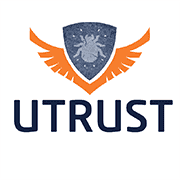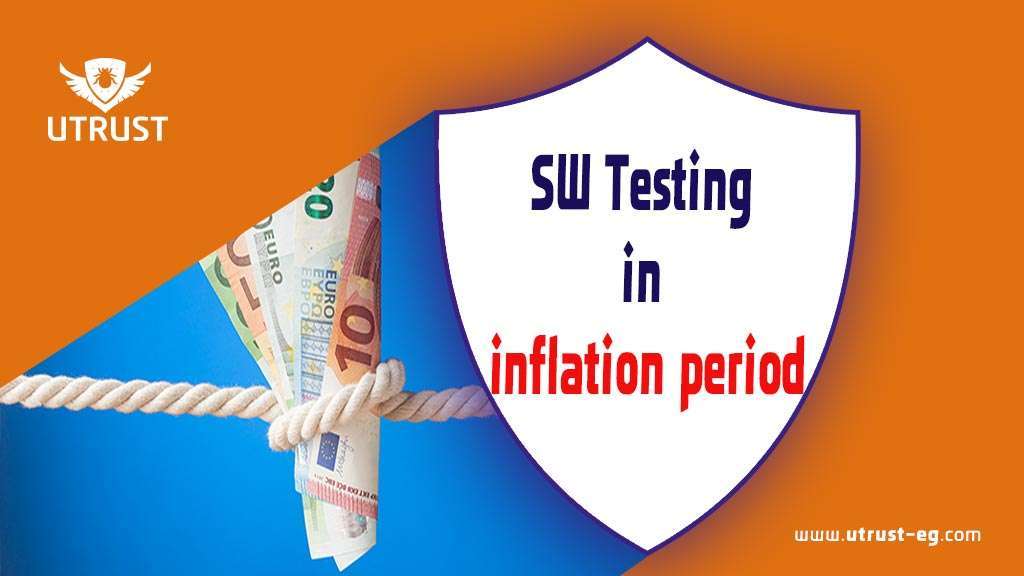Inflation period refers to a time of rapidly rising prices for goods and services, decreasing purchasing power of currency, and generally falling value of currency and during an inflation period, software testing continues to provide numerous benefits that contribute to the overall quality and success of software products.
Here are some key software testing benefits in an inflation period:
- Cost Optimization: Effective software testing helps identify and fix defects early in the development cycle. By detecting and resolving issues before they reach production, organizations can avoid costly rework, maintenance, and customer support expenses associated with faulty software.
- Business Continuity: Inflation periods can bring economic uncertainties and market fluctuations. Reliable software systems are crucial for maintaining business continuity. Thorough testing ensures that software functions as intended, minimizing disruptions and enabling organizations to adapt to changing market conditions.
- Customer Satisfaction: Inflation can drive customer expectations to higher levels due to increased competition. Rigorous software testing helps deliver high-quality products that meet customer requirements, resulting in enhanced customer satisfaction and loyalty. Satisfied customers are more likely to continue using the software and recommend it to others.
- Risk Mitigation: Inflation periods often introduce additional risks, such as increased operational costs and regulatory changes. Software testing helps mitigate these risks by identifying potential issues and vulnerabilities. By addressing these risks proactively, organizations can reduce the likelihood of financial losses, compliance violations, and reputational damage.
- Quality Assurance: Inflation periods may put pressure on organizations to release software quickly to meet market demands. However, compromising on quality can lead to long-term repercussions. Robust software testing ensures that the product meets quality standards, ensuring stability, reliability, and performance despite external pressures.
- Regulatory Compliance: Inflation periods can bring changes in regulations and compliance requirements. Software testing helps ensure that the software aligns with the latest regulatory standards, reducing the risk of penalties, legal issues, and reputational damage associated with non-compliance.
- Scalability and Performance: Inflationary periods may result in increased user demands and higher transaction volumes. Software testing, particularly performance testing, helps evaluate the scalability and performance of the system under varying loads. This ensures that software can handle increased user traffic and maintain optimal performance levels.
- Competitive Advantage: Inflation periods often lead to intensified competition. By investing in comprehensive software testing, organizations can differentiate themselves by delivering reliable, high-quality software products. A reputation for quality and reliability can provide a competitive edge in the market.
- Efficient Development Process: Software testing helps identify defects, inconsistencies, and inefficiencies early in the development process. Addressing these issues promptly leads to a more efficient development cycle, reducing delays, rework, and resource wastage during an inflationary period.
- Improved Decision-Making: Software testing provides valuable insights into the quality and performance of the software. Test reports, metrics, and analysis enable stakeholders to make informed decisions regarding software releases, investments, and resource allocation during an inflation period.
How software testing can help with risk mitigation during an inflation period?
Certainly! Here are some examples of how software testing can help with risk mitigation during an inflation period:
- Security Vulnerabilities: Inflation periods may lead to an increase in cyber threats and security risks. Thorough security testing helps identify vulnerabilities in software systems, such as weak authentication, data breaches, or potential attack vectors. By addressing these vulnerabilities through testing, organizations can reduce the risk of security breaches and protect sensitive data, mitigating potential financial and reputational damage.
- Compliance Requirements: Inflation periods often accompany changes in regulations and compliance requirements. Software testing ensures that the software aligns with the latest regulatory standards and industry best practices. By validating compliance through testing, organizations can avoid penalties, legal issues, and reputational damage associated with non-compliance.
- Data Integrity and Accuracy: Inflation can lead to changes in pricing, taxation, or financial calculations. Software testing includes verifying the accuracy and integrity of calculations, data inputs, and outputs. By conducting thorough testing, organizations can identify and rectify any discrepancies or inaccuracies in the software, minimizing financial risks and potential errors in critical calculations.
- System Performance: Inflationary periods may result in increased user demands and higher transaction volumes. Performance testing helps evaluate how software performs under various loads and stress conditions. By conducting scalability, load, and stress testing, organizations can identify performance bottlenecks, optimize system resources, and ensure that the software can handle increased user traffic. This reduces the risk of system failures, downtime, and customer dissatisfaction.
- Integration Challenges: Inflation periods often involve changes in pricing structures, supply chains, or financial systems. Software testing includes integration testing, which focuses on verifying the seamless interaction between different software components, modules, or external systems. By thoroughly testing integrations, organizations can identify and resolve any compatibility issues or data inconsistencies, reducing the risk of disruptions in business operations.
- User Experience: Inflation periods may lead to heightened customer expectations and increased competition. Usability testing and user experience (UX) testing help evaluate how the software meets user needs and expectations. By conducting user-centric testing, organizations can identify usability issues, navigation challenges, or performance gaps that may impact user satisfaction. Addressing these issues improves the overall user experience and reduces the risk of losing customers to competitors.
- Business Continuity: Inflation periods can introduce operational and financial risks. Software testing helps ensure the stability and reliability of critical business systems. By thoroughly testing software, organizations can identify and address any defects or vulnerabilities that may disrupt business operations. This mitigates the risk of system failures, downtime, and financial losses associated with software-related issues.
Can software testing contribute to efficient development processes during an inflation period?
Software testing plays a vital role in ensuring efficient development processes during an inflation period. Here are some ways in which software testing contributes to efficiency:
- Early Defect Detection: Software testing helps identify defects and issues early in the development cycle. By catching problems at an early stage, testing minimizes the need for extensive rework and reduces the overall development time. This leads to increased efficiency by preventing issues from escalating and impacting subsequent development stages.
- Iterative Feedback Loop: Testing facilitates a continuous feedback loop between developers and testers. Regular testing and bug reporting provide valuable information about the software’s quality and performance. This feedback allows developers to address issues promptly, make necessary code changes, and ensure that subsequent development efforts align with quality standards. The iterative feedback loop promotes efficiency by enabling quick adjustments and reducing the need for extensive rework later in the development process.
- Process Optimization: Software testing helps identify bottlenecks, inefficiencies, and areas for process improvement. Testers can provide insights into areas that require optimization, such as code review processes, test automation, or test data management. By addressing these areas, development teams can streamline their processes, eliminate redundancies, and improve overall efficiency.
- Automation and Test Tools: Test automation and the use of appropriate test tools contribute to development efficiency. Automated tests can be executed quickly and repeatedly, allowing for faster feedback on the software’s quality. Test tools streamline testing activities, automate repetitive tasks, and provide comprehensive reports and metrics. By leveraging automation and test tools, development teams can optimize their time and resources, resulting in faster development cycles.
- Collaboration and Communication: Effective communication and collaboration between developers and testers are crucial for efficient development processes. Testers provide developers with clear test requirements, test cases, and bug reports, enabling developers to reproduce and address issues accurately. Regular communication and collaboration facilitate a shared understanding of requirements, reduce misunderstandings, and prevent time-consuming rework caused by misinterpretations.
- Agile and DevOps Practices: Software testing aligns with agile and DevOps practices, promoting efficiency in development. Agile methodologies emphasize iterative development, continuous integration, and frequent testing. By integrating testing into each sprint or development iteration, teams can address issues early and deliver high-quality increments of software regularly. DevOps practices promote collaboration, automation, and continuous delivery, enabling seamless integration of testing and development activities and ensuring efficient software delivery.
- Test Environment Management: Testing requires suitable test environments that closely resemble the production environment. Efficient test environment management ensures that developers and testers have access to the required hardware, software, and configurations for testing. This avoids delays caused by unavailable or inadequate test environments, allowing development and testing activities to progress smoothly.
What are metrics and analysis that stakeholders can use to make informed decisions during an inflation period
During an inflation period, stakeholders can leverage various metrics and analysis to make informed decisions. Here are some key metrics and analysis that can provide valuable insights:
- Defect Density: Defect density is a metric that measures the number of defects identified per unit of code or functionality. Tracking defect density over time helps stakeholders assess the quality of the software and identify areas that require improvement. Higher defect density may indicate potential risks and the need for additional testing or development efforts.
- Test Coverage: Test coverage measures the extent to which the software has been tested. It indicates the percentage of code or functionality that has been exercised by tests. Stakeholders can analyze test coverage to ensure that critical areas of the software have been adequately tested. Low test coverage may indicate gaps in testing efforts, increasing the risk of undetected defects.
- Test Execution and Pass/Fail Rates: Monitoring the test execution progress and pass/fail rates provides insights into the stability and quality of the software. Stakeholders can analyze these metrics to identify trends, patterns, and areas that require attention. Consistently high pass rates indicate good software quality, while frequent test failures may suggest underlying issues that need to be addressed.
- Defect Aging: Defect aging measures the time taken to address and resolve identified defects. Stakeholders can track the average age of open defects to assess the efficiency of defect resolution processes. High defect aging indicates potential bottlenecks in defect resolution, impacting the overall development cycle and increasing the risk of delayed releases or customer dissatisfaction.
- Mean Time to Detect (MTTD) and Mean Time to Resolve (MTTR): MTTD measures the average time taken to identify defects, while MTTR measures the average time required to resolve defects. These metrics provide insights into the efficiency of defect detection and resolution processes. Stakeholders can analyze MTTD and MTTR to identify areas for improvement, streamline defect management, and minimize the impact of defects on the software’s stability and quality.
- Risk-based Analysis: Risk-based analysis involves assessing and prioritizing risks associated with the software. Stakeholders can identify and analyze potential risks, such as security vulnerabilities, compliance issues, or performance bottlenecks. This analysis helps prioritize testing efforts, allocate resources effectively, and make informed decisions on risk mitigation strategies.
- Customer Feedback and Satisfaction: Monitoring customer feedback, satisfaction scores, and user reviews provides valuable insights into how well the software meets customer expectations during an inflation period. Stakeholders can analyze customer feedback to identify areas for improvement, prioritize enhancements, and make informed decisions on future development efforts.
- Release and Deployment Frequency: Tracking the frequency of software releases and deployments is essential during an inflation period. Higher release and deployment frequency indicate agility and responsiveness to changing market demands. Stakeholders can monitor these metrics to assess the organization’s ability to adapt to inflationary changes and make informed decisions on release schedules and resource allocation.
- Resource Utilization: Analyzing resource utilization metrics, such as the time spent on testing activities or the efficiency of test automation, helps stakeholders assess the effectiveness of resource allocation. It provides insights into potential bottlenecks, identifies areas for optimization, and enables informed decisions on resource allocation during an inflation period.
- Cost of Quality: Cost of quality metrics assess the overall investment in quality assurance activities compared to the cost of defects and rework. Stakeholders can analyze the cost of quality to evaluate the effectiveness of testing efforts, identify areas for cost optimization, and make informed decisions on resource allocation and process improvements.
Conclusion
By leveraging the benefits of software testing during an inflation period, organizations can mitigate risks, maintain customer satisfaction, ensure compliance, and stay competitive in a challenging economic environment. It is crucial to prioritize testing efforts and maintain a focus on delivering high-quality software products despite external pressures and By incorporating these testing activities into the software development lifecycle during an inflation period, organizations can mitigate risks, ensure compliance, and maintain the stability and reliability of their software systems. It allows them to navigate through economic uncertainties while delivering high-quality software products to meet customer demands.
Comments are closed.





